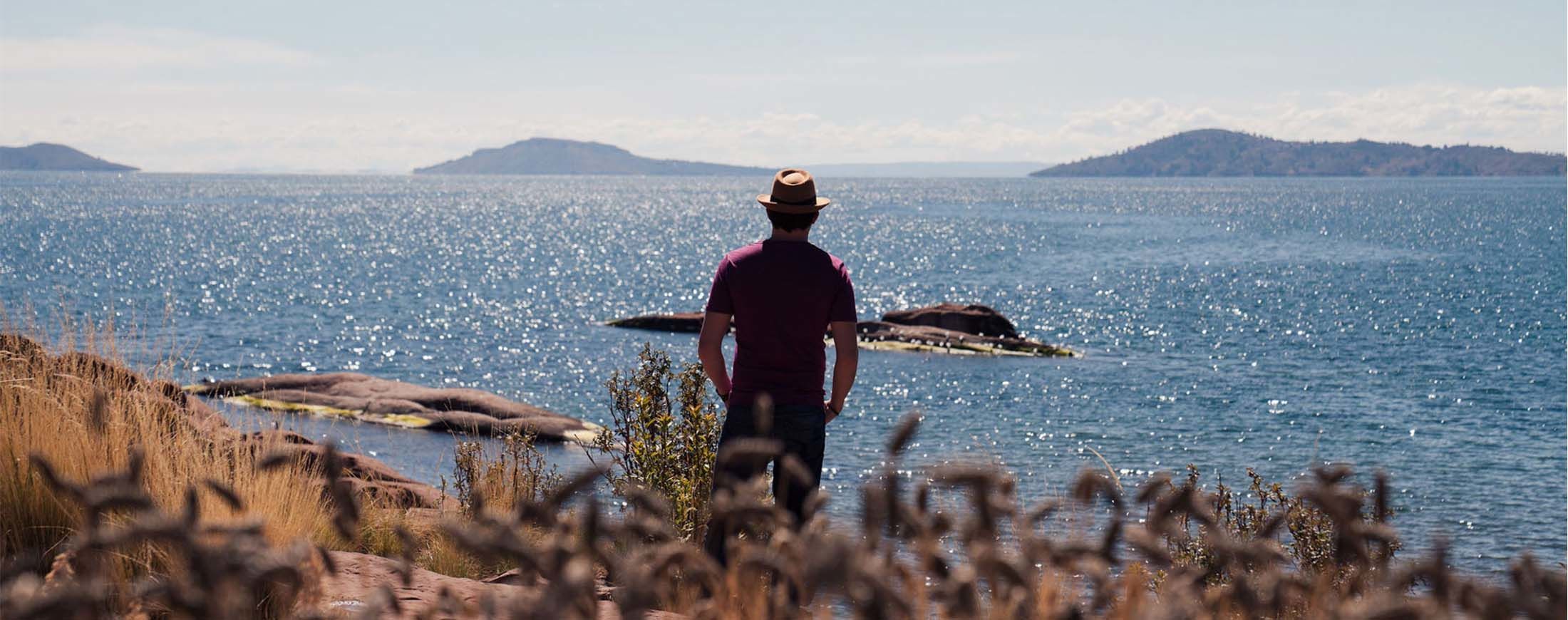What to do in Lake Titicaca? Our Selection
Lake Titicaca, the freshwater lake located at the Bolivian border in the southern Andes, is as boundless as it is beautiful. Its wellspring of life and culture, including the limitless surrounding landscape, is a daily reminder to us at Andean Experience just how awe-inspiring our home is. 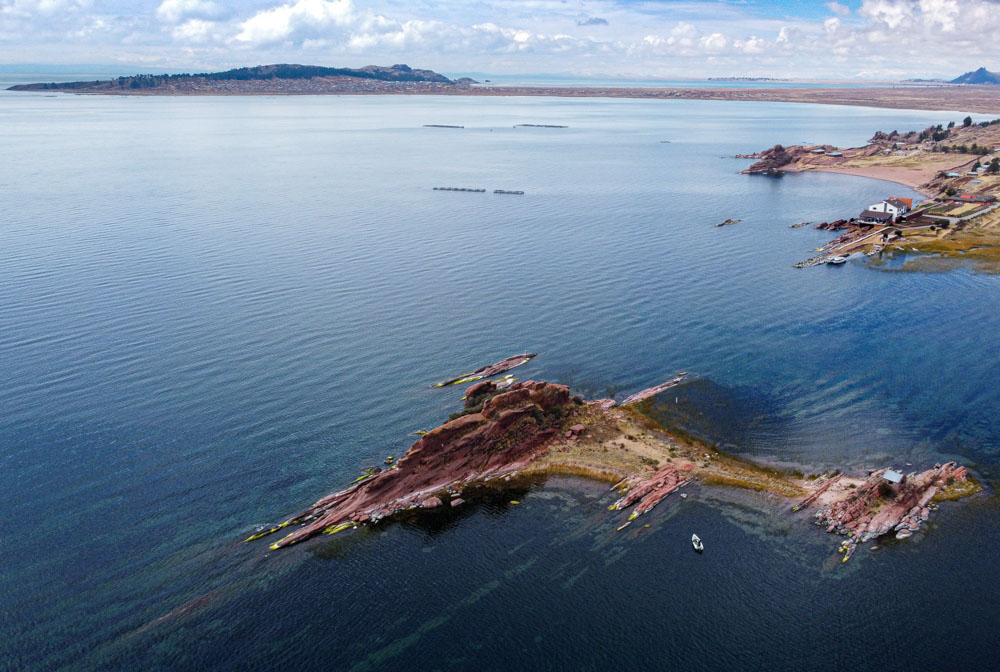
On the surface of the lake, which happens to be the largest in South America, you can find centuries-old societies living and working as they have throughout history, mingling with the modern-day nuances of daily life. Man-made islands and ancient ruins are just the beginning of Titicaca’s mystique, and the region’s deep, rich collection of cultures has turned it into one of the world’s most exciting destinations.
From Titilaka, our base for compelling and enchanting adventures around the lake, we can discover a world told through thousands of years of history. Set on a secluded private peninsula with unencumbered views and direct access to the lake, we have an endless supply of enriching opportunities. From here every detail of the lake, as specific as UNESCO protected culture and as immense as the body of water itself, can be known on a personal level. Like the sunrises and sunsets from our little utopia, we want you to see it all. There are few places on Earth as captivating as Lake Titicaca.
Here is our list of top activities that travelers to Lake Titicaca need to put on their itineraries.
Uros Islands
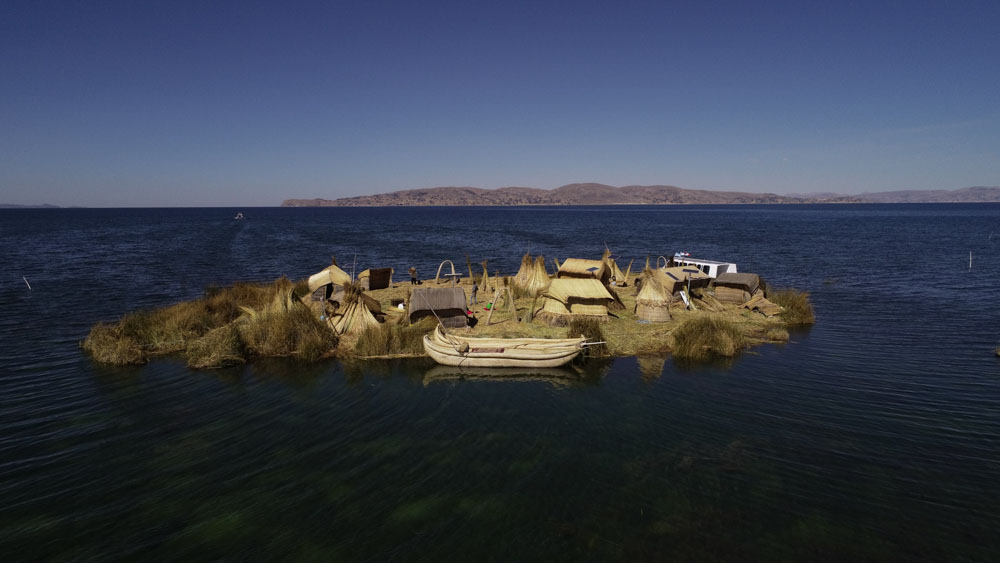
Made entirely of reeds called “totoras,” the Uro-Aymara people have called the Uros Islands home for hundreds of years. The totoras are life-giving floating vegetation that not only provide the substance of the islands themselves, but they are also used in making boats and sea-faring vessels, as well as tools and crafts that are still used today. Take a boat ride to these unbelievable islands and cruise through their interesting history.
Spend enough time on the Uros and you may come away with a personal gift from one of the inhabitants to commemorate your trip, a true symbol of Lake Titicaca. Roughly 1,200 Uros remain on the islands, maintaining the lifestyle that has served them for years. Supplementing hunting and fishing with tourism, heading to the lake to see the remarkable lives of the Uros is an activity you will undoubtedly cherish.
Taquile
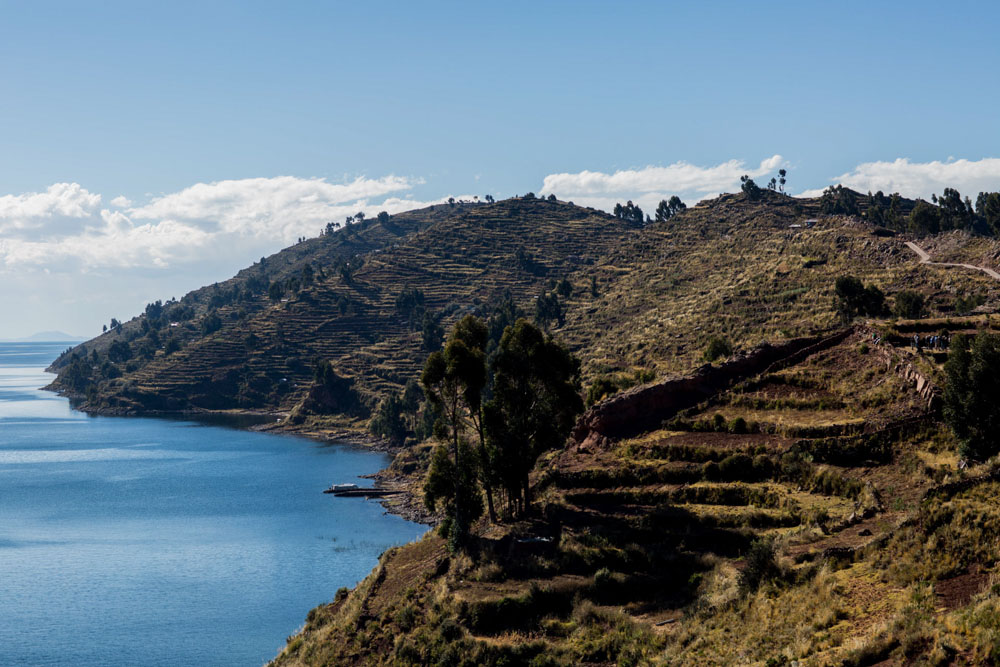
The distinctive island of Taquile has its own appeal as well, beckoning folks to its shores to view their ancestral weaving practices. Known for the skill and beauty in their craft – so much so that the art textiles are UNESCO protected, the Taquileños affirm their identity in the hand-woven pieces. The gripping stories and elaborate artwork depicted are used in courtship and marriage, and to show status and community roles. Belief systems displayed on these artworks are a testament to those who came before them, making them an invaluable pre-Hispanic commodity for all who are lucky enough to come across them.
The island itself is evidence of natural beauty on Lake Titicaca. With over two square miles to explore, the Taquile community offers tours of its trails as well as informative excursions to ancient Inca locations. Enjoying the significance of ceremonial sites and planting terraces of such an impactful civilization is a special experience. With its own infrastructure, including a community network that selflessly shares its culture, flora, and history with those who visit, get ready to see a fascinating locale that will take your breath away.
Sillustani
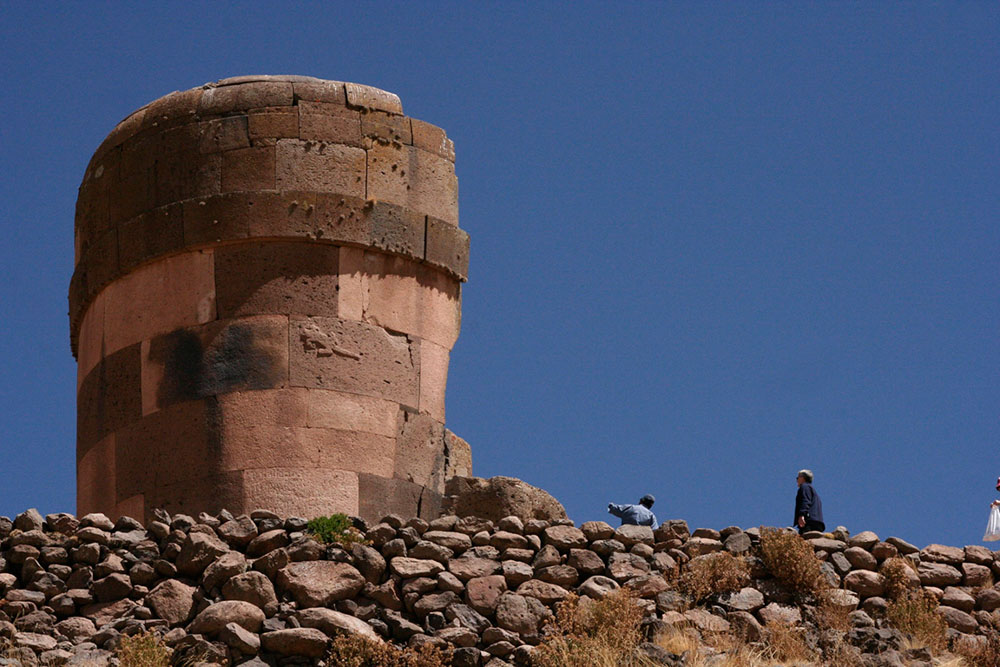
For those with ancient Peruvian empires on the mind, Sillustani is a remarkable cemetery dating back to pre-Inca and Inca past. The burial site is replete with stone structures, called Chullpas, located around Lake Umayo to the northwest of Titicaca, near Puno. The Chullpas pay respect to the historic nobility of the previous civilizations, including the Inca; the tombs can be as tall as 12 meters and capable of housing entire families. Standing among the ruins at the confluence of societies, you will certainly be moved by the experience.
Admiring the architecture and heritage are just a couple of ways for many to appreciate Sillustani. Glancing across the site, you can compare the building methods over time, noticing how pre-Inca burial sites were different than – and were influenced by – more modern cultures. Among sacred grounds throughout the Altiplano, this specific location has a high number of well-preserved Chullpas. You can also visit the Site Museum to view artifacts from earlier peoples, including the Collo and Tiahuanaco, rounding out your in-depth journey. We love the historic proportion of such a trip, and it builds on the allure of Lake Titicaca.
Aramu Muru
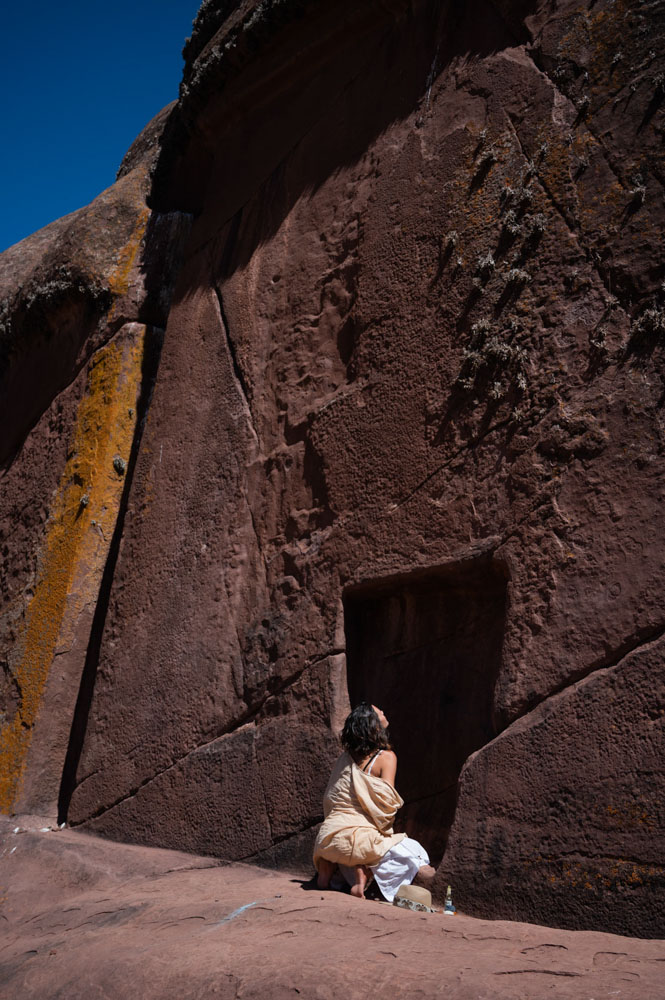
One of the biggest assets to the scenery of Lake Titicaca is its geology, if not most notably Aramu Muru. On the western shores of the lake in a vivid canyon and former Inca site, you can visit the “Gate of the Gods.” What appears to be an aborted construction project, Aramu Muru is a carving in the stone about 23 feet tall, with a six-and-a-half-foot doorway further recessed into the rock. Surrounding the site is a gorgeous expanse of land, featuring red rocks and immense natural stone structures dotting the landscape.
Not to be outdone by the sheer beauty of its nature, the Inca history and general mystery behind Aramu Muru play into the region’s identity steeped in folklore. Equal parts spiritual and breathtaking, the site is a beacon for those who find terrain alluring, and it is particularly striking to see it just outside of Lake Titicaca. What’s more, it reminds you how incredibly immeasurable the Altiplano is, and once you have stood at Aramu Muru, you can’t help but feel privy to one of Peru’s cosmic secrets.
Lampa
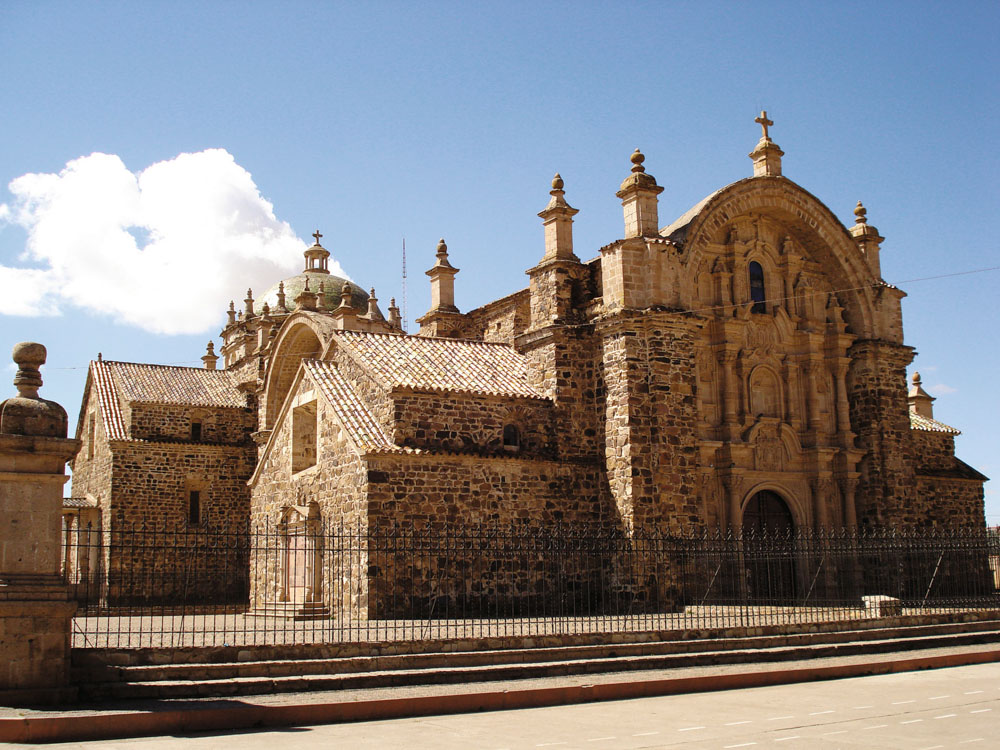
An interesting representation of a Peruvian village in the Andes, the quaint yet intricate town of Lampa is bursting with character and intrigue. Known as the Pink City and nestled to the north of Puno and Juliaca, Lampa is bordered with uncanny vistas of the beautiful Altiplano. Located beside a lake (Laguna Colorada), it houses magnificent streets and a significant church: the Church of Santiago Apostol. Architecturally striking, and with many of the Andean building features recognized throughout Peru, the side garden and white dome provide enough aesthetics to make a trip worthwhile.
The true magnitude of the church is felt inside, however, and Lampa’s place as a Puno destination is because of its many secrets within. Any journey north to the church allows travelers to see the crypt below, where skeletons are incorporated into the structure. It also houses one of the few replicas of La Pieta, a sculpture by Michelangelo that garners attention in all its locations. A true work of art, the replica, the church, and the town itself, Lampa is a fascinating discovery to investigate around Lake Titicaca.
Aymara Route
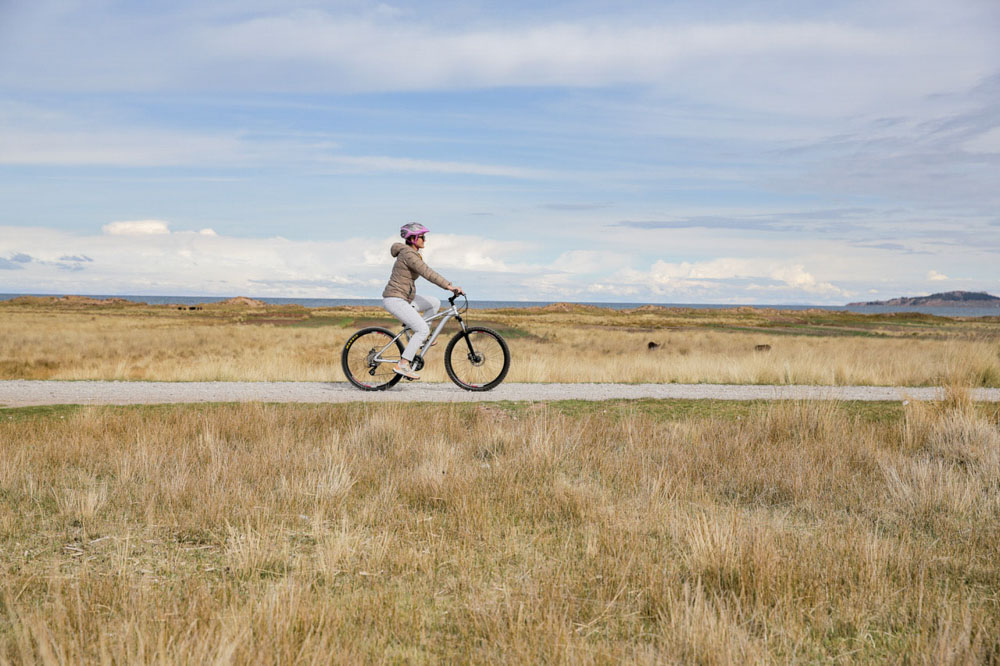
Those ambitious trekkers who want to make the most of their time will enjoy the Aymara Route. Incorporating some of the most charming and elevating activities in southern Peru, this multifaceted tour takes you to Chucuito and the Temple of Fertility, Molloco and its pre-Inca remains, Aramu Muru, and then Juli, kindly nicknamed the “Rome of America,” where you can enjoy adventure sports as you like.
The Temple of Fertility, supported by legend, was a lodge to help cure infertility, and currently houses phallic stone structures. Molloco is dedicated to the Lupaca people, and their synthesis with the Inca is apparent in the architecture of their burial sites and Chullpas, similar to those of Sillustani. After Aramu Muru and the “Gate of the Gods,” journey to the Juli and its beach, where you can kayak, jet ski, hike, ride ATVs, and do any number of action sports.
The spectacular sites along the banks of Lake Titicaca make it a perfect idea for an all-encompassing trip; whether spending significant amounts of time from lodge to lodge, or just a couple hours to dip your toes, you can’t go wrong with this structured adventure. We love the Aymara Route because it is a healthy mix of activities for everyone. The landscapes of southern Peru mixed with the inherent cultures that bring the past to the present are some of the best parts of the Altiplano.
THINGS TO KNOW BEFORE YOU GO:
Like any other worldly destination, Lake Titicaca has its own culture that is based on the people who have been here throughout history. It is located at a relatively high altitude, over 3,800 meters above sea level, making it a valuable part of the Altiplano and the Andes. An underwater temple has even been discovered in the depths of its waters, dating back 1,500 years, which means it has been the center of many civilizations. There are approximately 41 islands within the lake.
The lake contains part of the border with Bolivia, so shared territory has led to some fractures in the beliefs of the close communities – but it has also nurtured the creation of new ones between them. From one end of the lake to the other, you can find multiple societies that, while sharing similar aspects of their cultures, have completely unique identities to those across the water. With this in mind, you can easily enhance and refine any exploration expedition into the area.
If you are interested in understanding a further connection of civilizations on both the Peruvian and Bolivian sides of the lake, then you should plan a trip to Isla del Sol. With a wealth of ruins, no paved roads, and an intersection of multiple humanities, it is an ideal place for outdoor enthusiasts to learn about many magnificent features of the lake. The agricultural terraces on the island reveal a compelling history that possibly dates back as far as 3,000 BCE.
Though Lake Titicaca is generally accessible from nearly everywhere, the main access points are either Lima or Arequipa (we have great recommendations and bases for both Lima and Arequipa). Flights from Lima and Cusco are readily available to Juliaca Airport, and there are great driving tours by car or bus from Arequipa that will help you fulfill the Altiplano Circuit and make the most out of the marvelous scenery.
You will love the weather but be prepared for a cooler high-altitude climate. Average temperatures in summer dip into the upper 30s (F) and just below freezing in the winter. Average highs are in the 60s (F).
TITILAKA:
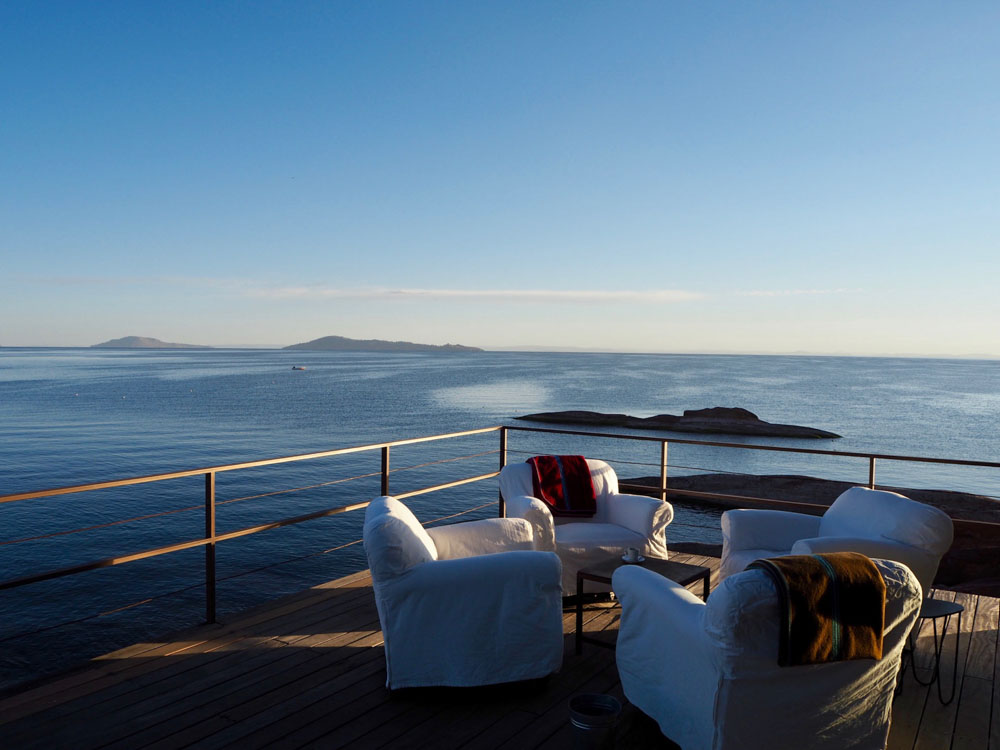
From its location on a secluded private peninsula, Titilaka places you in the heart of timeless communities and allows you to experience the magic of Lake Titicaca with an eye on sustainability, cultural preservation, and natural beauty. Working closely with local guides and the societies surrounding the lake, we ensure all of your desired activities are at your fingertips. Because of our integrated role, we have exclusive day trips and options for our guests to share, or book in private.
From Titilaka, you can join boat tours to Taquile and the Uros Islands. Reserved exclusively for guests, you will spend a day getting to know the people living there and experience the traditions of Lake Titicaca. Our guides can take you through the totora reeds and fill you in on their importance to the region as you gently glide through the pristine lake. If you are interested in a closer look at their way of life, we will introduce you to a family in the Titinos community, an island opportunity preserved solely for guests of Titilaka.
Should you choose to enjoy the lake by kayak or canoe, the boat house has a number of preparations to get you up to speed and onto the water. Choose from paddle boarding, sunfish sailing, canoes, and more to explore the biodiversity of the lake. We have recreational options for everyone.
The burial sites at Sillustani and the historic architecture of Lampa are easily explored from Titilaka. Both are a couple hours away and can be enjoyed throughout the day. We have boats and cars reserved for guests, so the proximity of these sites to your private peninsula makes them the perfect day trip whenever you are en route. Even if you just want to spend time close to your base, we can set up birdwatching guides to help you discern between the more than 100 species of birds that make their way to Lake Titicaca.
Whether you have just a few days to travel to the Altiplano or are there to immerse yourself for a longer adventure, we have you covered with full itineraries and the best activities.
With such sought-after natural wonder, there are countless ways to lose yourself in the magic here. The immersive experiences we offer from Titilaka allow you the chance to know southern Peru and the Andes in a historically profound way. The pre-Hispanic lake communities, the powerful architecture and the towns that house it, and the people you meet along the way will all encourage your interaction with humanity unlike anything you’ve seen before. From the shores of legendary Puno to the captivating wilds in and around its Altiplano water, Lake Titicaca is an amazing place you won’t soon forget.



